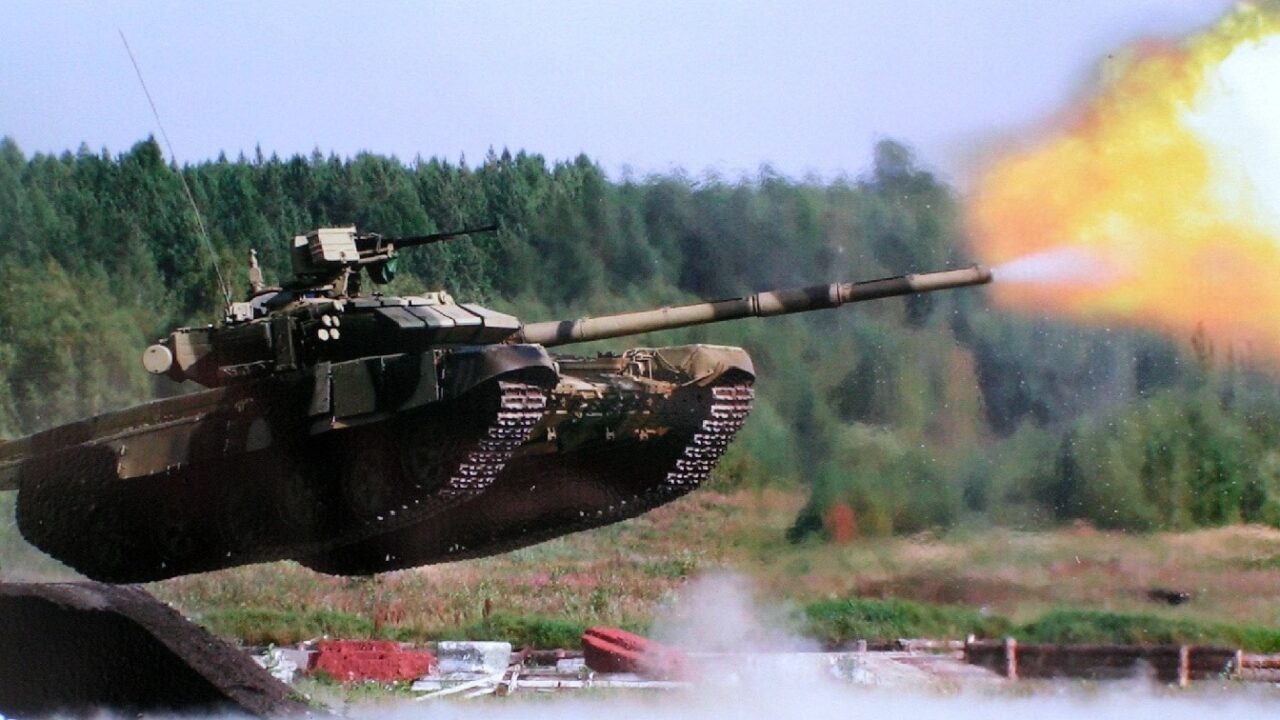Russia’s T-90 Tank Touted as Best In Class Is Fizzling Out in Ukraine – What happened to Russia’s vaunted T-90 tanks? You already know that Russian tanks have taken a major whipping on the battlefields of Ukraine. The Russian tank fleet was supposed to have been modernized for a 21st Century decisive conflict to roll into Kyiv and take the capital. Instead, anti-tank guided missiles have taken their toll on Russian armor and the Ukrainians have probably come up with innovative tactics with the Javelin anti-tank guided missiles (ATGMs) to overwhelm Russian armor. The T-90 was supposed to shine a light on the fog of war. So what exactly happened?
T-90s Having Major Difficulty
Russian soldiers are sometimes abandoning the tank. This video from March 26, which has garnered 2.8 million views on YouTube, shows two T-90s captured by the Ukrainians. Javelin and NLAW anti-tank weapons have taught Vladimir Putin’s tank battalions a hard-earned lesson with many burned-out hulls of T-90 tanks littering the battlefield.
What’s Going on With the T-90?
This T-90 carnage is a mystery.
The T-90 and its variants are supposed to have a system that would foil anti-tank missiles. Known as the Shtora-1 active protective system, the countermeasures were designed to confuse the guidance system of incoming enemy missiles. It’s an infrared jammer with a laser warning device. After picking up a threat alert, the system can put out smoke to block the incoming “thermal and laser wave bands.” Finally, a pair of electro-optical jammers keep the ATGM from homing in on the tank.
Survivability Was a Selling Point
The T-90 cannon has an auto-load feature that is supposed to send high-explosive anti-tank rounds quickly downrange. This eliminates the need for a human loader and reduces the crew size down to three. The armor was also believed to be a strength. And some evidence revealed that at least in Syria the newfangled Kontakt-5 armor (explosive reactive) kept TOW missiles from destroying a base-model T-90.
It’s the Weakness Against Javelins
With those two features – protection from ATGMs and improved armor – the T-90 should be more survivable in Ukraine. It must have a weakness along the top of the turret which is less fortified. American Javelin ATGMs can streak upward and then dive down to blast the top of the turret. But the Shtora should defend against that.
Shtora Protection System Can Be Defeated
Research from the Modern War Institute at West Point, if heeded, may have turned the tide of combat when it comes to Javelin’s tactics against the T-90.
“Shtora has no effect on Javelins or recoilless rifles. When targeting a vehicle with Shtora, gunners using the ITAS (improved target acquisition system) should never directly laser the tank with the range finder, instead of targeting a patch of ground three vehicle lengths away. This will allow the gunner to avoid being detected by Shtora.”
The Defenders Are Learning Faster Than the Occupiers
The Ukrainians may have figured that out on their own in combat. Or It’s advice that American trainers have probably communicated to Ukrainian soldiers. Either way, the Javelin is teaching the Russians that tanks, no matter what their modernization and improvements are, can fail.
Adapt Or Die
Now what?
It appears the Russian tankers are getting out-smarted by the Javelin-wielding fighters. No wonder the Ukrainians call for Javelins over anti-tank weapons such as the older and less sophisticated LAW, the TOW, and the AT4.
Until the Russians figure this out – how to keep the ATGMs from destroying their tanks – Putin’s forces may have to use tanks for defense instead of offense. The Ukrainian soldiers know their territory, whether it is woods where they can set up ambushes or hiding in the rubble of cities to fire at tanks. This is another reason that the main battle tank may come to be obsolete.
Now serving as 1945’s Defense and National Security Editor, Brent M. Eastwood, PhD, is the author of Humans, Machines, and Data: Future Trends in Warfare. He is an Emerging Threats expert and former U.S. Army Infantry officer. You can follow him on Twitter @BMEastwood.

